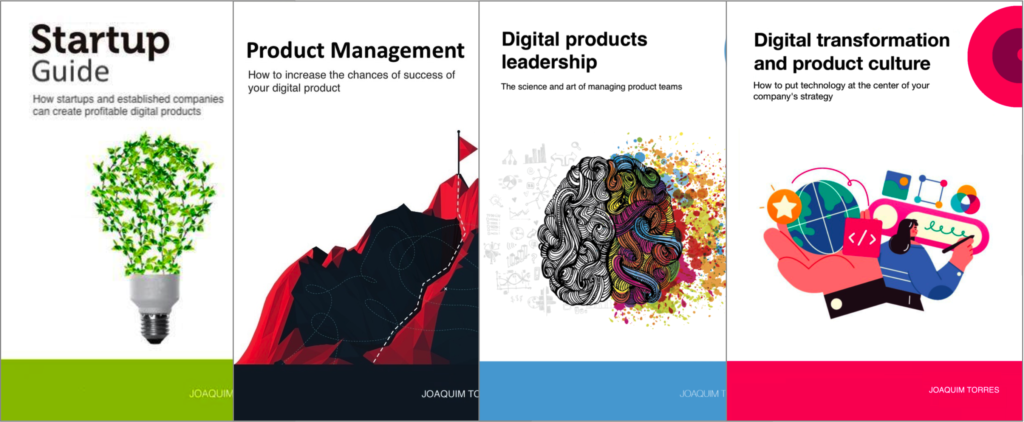
AI Is Not Just About Productivity
23 de September, 2025Not Every AI Is Generative
7 de October, 2025In the first article of the series on AI and product management, I wrote that:
AI is not just about productivity: it’s about creating better products. By better products, I mean products that solve the customer’s problem more effectively while also delivering better results for the company. AI is another technology we need to understand and add to our “toolbelt” to help us build better products.
However, this doesn’t mean that every feature of our products should use AI, because AI is a technology that produces probabilistic solutions.
A probabilistic solution is one that, when given the same input data, may generate different results in different executions, because it relies on statistical models or algorithms that deal with uncertainty.
Instead of returning a single, exact answer, it provides an estimate based on probabilities. For example: “there’s an 82% chance this property will interest you” or “the model predicts a 70% probability of rain tomorrow.”
A deterministic solution, on the other hand, is one where, given the same input, the system always returns exactly the same result. It follows predefined rules and calculations, without involving uncertainty or estimates. There’s no room for randomness or probability — the output is predictable and reproducible.
Below is a summary of the differences between deterministic and probabilistic solutions:
| Deterministic | Probabilistic |
|---|---|
| Always returns the same result for the same input | May vary, as it works with estimates |
| Based on fixed rules and formulas | Based on patterns and data inferences |
| Cheaper and more predictable | More flexible and adaptable to complex situations |
| Ideal for calculations, validations, and control | Ideal for predictions, recommendations, and personalization |
For example, in our bank account, we want absolute certainty that the balance is $100. We don’t want the balance to have a 95% chance of being $100, with a 5% chance of being something else. On the other hand, it makes sense for investment recommendations to be probabilistic: “people with your income and spending profile have a 77% probability of investing in Fund X and a 73% probability of investing in Fund Y.”
For product managers, understanding this distinction is essential to deciding where AI truly adds value — and where a simple deterministic solution is more efficient, cheaper, and more reliable.
Adding AI to a feature that doesn’t need it increases cost, complexity, and the risks of performance, explainability, and even compliance. Choosing the right technology for each problem is part of the product development team’s job.
How to decide whether a feature needs AI
Before adding AI to a feature, ask yourself:
- Does the problem involve uncertainty or patterns too complex to solve with fixed rules?
- Does the variability in outcomes improve the customer experience or create unnecessary risk?
- Do the expected gains justify the cost and complexity of maintaining a probabilistic model?
- Do I have enough high-quality data to train and sustain the model?
In many cases, a simple deterministic rule meets the goal in a cheaper, more predictable, and more reliable way.
Deciding between deterministic and probabilistic solutions is part of selecting the right technology for each problem — balancing customer value, business impact, cost, and risk.
Recalling the example from the previous article about Lopes’ “similar properties” algorithm: the initial version was deterministic, as it suggested similar listings based only on three static variables (location, type, and price), which limited its accuracy. With this deterministic algorithm, 28% of the listings had no similar property at all.
When we set out to create a new version of the algorithm, we expanded the analysis from three to ten static variables and applied machine learning techniques — learning which properties were most clicked and using that information to improve future recommendations — which meant we were building a probabilistic solution.
The new version became probabilistic because it moved away from fixed rules and began to learn patterns in customer behavior. Instead of simply comparing static variables (location, type, and price), it analyzed which properties people clicked on when browsing a given listing and used that data to calculate the probability that other properties would be relevant. As a result, the recommendations were no longer a static list but a dynamic ranking ordered by the highest likelihood of attracting the customer’s interest. This approach is typical of machine learning: two runs with the same input can generate different results as the model updates or as new interaction data is incorporated.
Understanding these distinctions helps teams avoid falling for the hype and focus on where AI truly makes a difference.
In the next article, we’ll talk about the difference between analytical AI and generative AI. Spoiler: we’ve been using analytical AI for a long time!
Workshops, coaching, and advisory services
I’ve been helping companies and their leaders (CPOs, heads of product, CTOs, CEOs, tech founders, and heads of digital transformation) bridge the gap between business and technology through workshops, coaching, and advisory services on product management and digital transformation.
Gyaco Podcasts
At Gyaco, we believe in the power of conversations to spark reflection and learning. That’s why we have three podcasts that explore the world of product management from different angles:
- Produto em Pauta: In the new season, titled “Beyond the Buzzwords”, Felipe Castro and I demystify product terms with real examples from our clients. Available on YouTube and Spotify. Recorded in Portuguese, with English subtitles on YouTube.
- Product Chronicles, the Brazilian Way: with Fábio Martinelli Duarte and Paulo Caroli — the Brazilian way of building products: stories, challenges, and lessons learned, featuring case studies from our clients. Available on YouTube and Spotify. Recorded in English, with Portuguese subtitles on YouTube.
- Beyond the Article, Expanded by AI: C.L.A.R.A. (Creative Language AI for Reflective Augmentation) chats with my AI clone, JocAI, expanding on my articles with new perspectives. Available on YouTube and Spotify. Thanks to AI, episodes are available in English, Spanish, and Portuguese.
Digital Product Management Books
Do you work with digital products? Do you want to know more about managing a digital product to increase its chances of success, solve its user’s problems, and achieve the company objectives? Check out my Digital Product Management books, where I share what I learned during my 30+ years of experience in creating and managing digital products:
- Digital transformation and product culture: How to put technology at the center of your company’s strategy
- Leading Product Development: The art and science of managing product teams
- Product Management: How to increase the chances of success of your digital product
- Startup Guide: How startups and established companies can create profitable digital products

